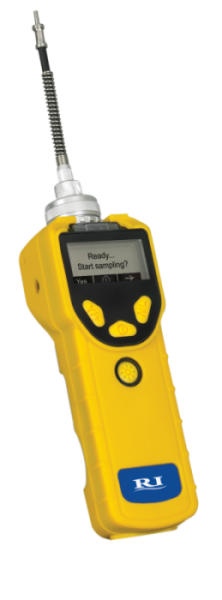Volatile Organic Compounds Level Monitor
RI’s VOC Meters are the most advanced, sensitive and reliable handheld VOC detectors on the market.
As Volatile Organic Compounds (VOC) in the lab can have a negative effect on ART results, it is important to be able to monitor these levels.
The RI VOC Meters are capable of detecting contamination at 0.1 parts per million (ppm) level. 0.1ppm is below an established threshold of embryo toxicity.
The VOC Meter is available with or without data-logging.
This product is available for sale in the U.S.A and selected countries in Europe and the rest of the world.

“Ensuring we provide and maintain optimal environmental conditions for our patients’ embryos whilst ex-vivo is one of the most fundamentally essential tasks of a successful lab”
Ronny Janssens, Centre for Reproductive Medicine, UZB, Brussels, Belguim

Key Features
Proven
Proven PID technology. The patented 3D sensor provides 3 second response from 0.1 ppm to 10.000 ppm and sets a new standard for resistance to moisture and dirt
Sensitive
Up to 200 times more sensitive to VOCs than conventional Heated Metal Oxide Sensors (HMOS) Detects more chemicals than with any other method: 252 chemicals calibrated to date with more being tested. Air samples can be collected by device for laboratory identification of Volatile Organic Compounds
User Friendly
User-friendly screens make it easy to use for simple applications and flexible enough for sophisticated options. Easy-to-read display with backlight
Storage
6 month capacity of data at one minute intervals for download to a PC (with the optional datalogging)
Self Cleaning
Self-cleaning lamp and sensor: Patented self-cleaning lamp and sensor minimize the need for maintenance and calibration
VOC Monitoring
Since 1998 (J Hall et al, Human Reproduction) it is accepted that IVF laboratories are at risk of environmental contamination from harmful Volatile Organic Compounds (VOCs).
Exclusively from Research Instruments comes the RI VOC Meter for detection of Volatile Organic Compounds at very low levels.
It can be surprising where VOCs are found. In field tests we have found Volatile Organic Compounds present in laboratories, incubators, incubator gas tubing and lab cabinets. We have also found VOCs present in laboratories where VOCs removing filtration was in use.
How is it used?
Simply start the device and use to identify areas of high Volatile Organic Compounds.
An audible alarm will sound in areas where VOCs are higher than recommended and the concentration of VOCs present will be displayed on the screen.
For added protection, the unit can be wall-mounted and Volatile Organic Compounds levels logged continuously.
How does it work?
The analysis performed by a technology called Photo-Ionisation Detection (PID).
The air is drawn into the detection chamber by a pump. UV light is used to ionize (break the molecular bonds in) any organic chemicals that are present.
These ions are electrically charged, and the meter detects them as a tiny electrical conductivity. The more contamination, the higher the current that flows.
Validation
The threshold level of toxicity of Acrolein for mouse embryos has been established as 0.58ppm when dissolved in media.
International consensus provides guideline limits for Indoor Air Quality (IAQ) in the range from 0.10 to 0.65ppm depending on location.
Field experience suggests the 0.5ppm indicates potential IAQ contaminants in laboratories.
Data Logging (yellow)
Non Data Logging (green)
| Part Number | Part Description |
|---|---|
| 7-90-040-2 | VOC Meter v2.0. Records levels of toxins in laboratory air |
| 7-90-041-2 | VOC Meter v2.0 with Accessory Kit (hard case, 5 filters/o-rings and vapour zeroing kit) |
| 7-90-042-2 | VOC Meter v2.0 with Datalogging (ProRAE Suite and cable) |
| 7-90-043-2 | VOC Meter v2.0 with Datalogging and Accessory Kit |
| 7-90-045 | Humidity trap for VOC Meter – pack of 10. Allows use in incubator. For v1.0 only |
| 7-90-044 | Calibration Kit with Gas Flow Regulator and Isobutylene Gas cylinder |
A: No, the unit only identifies that a VOC is present. If you need to identify the VOC, then use the optional gas collection bag, and then send the bag for analysis.
Q: What concentration of calibration gas should be used?
A: Isobutylene in air at 100 parts per million.
Q: How do I measure other gases?
A: The VOC meter simultaneously measures a wide range of compounds.
Q: Is the calibration accurate for other gases?
A: Different gases produce different readings on the meter. For a truly accurate reading for a particular gas the meter would need to be calibrated for the gas, or a correction factor can be applied to the reading. However, maximum safe levels of all possible contaminants have not been determined for IVF, so a standard calibration with isobutylene gives a good indication for all VOCs.

